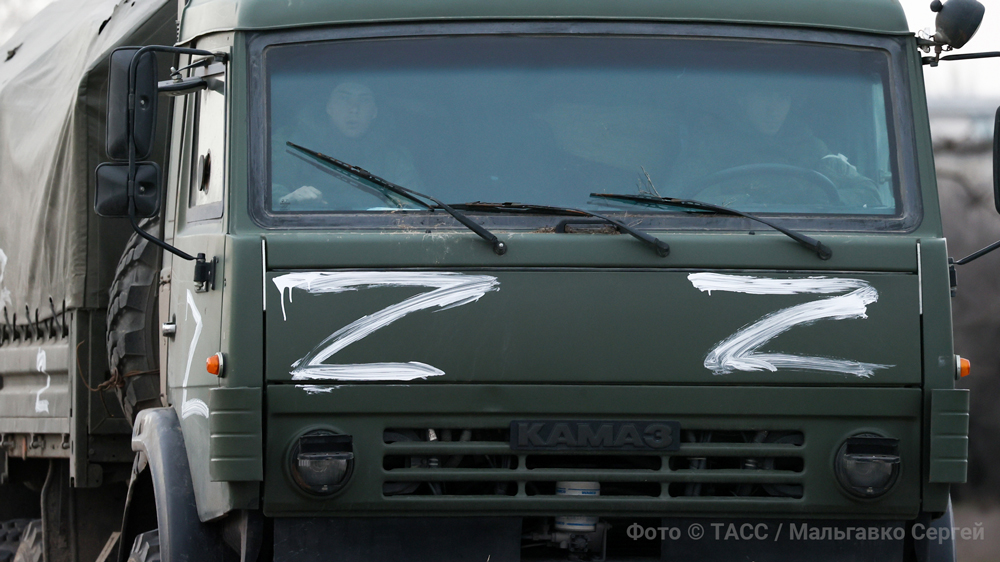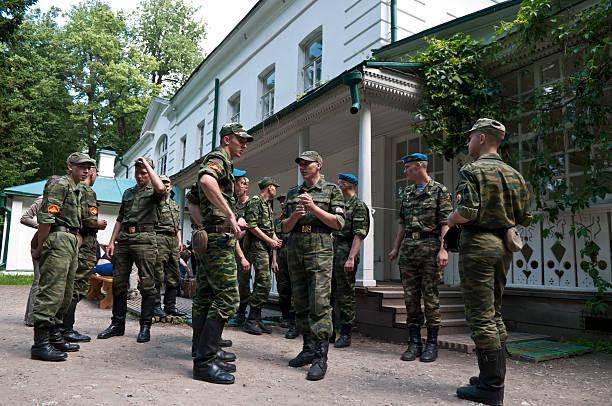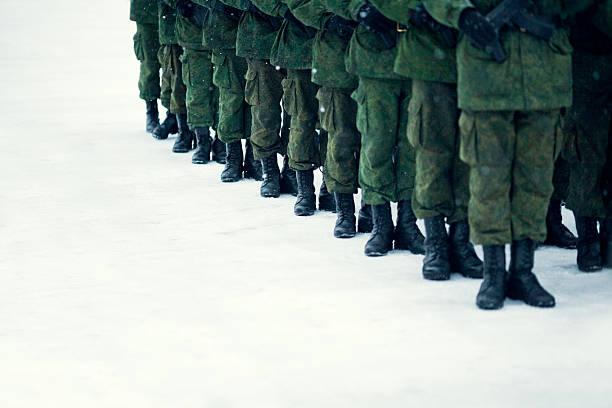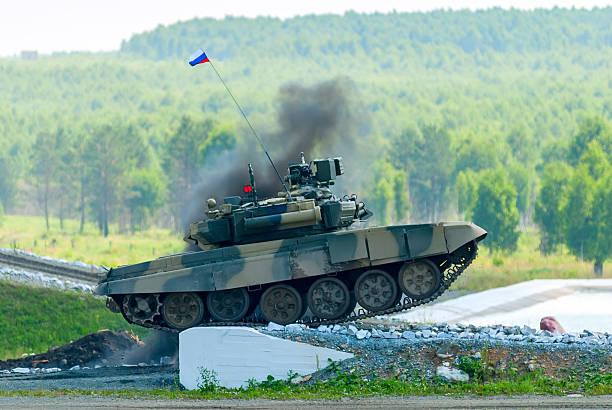From Wikipedia, the free encyclopedia
«Z» symbol
«Z» symbol (enclosed in a square)
«V» symbol
«O» symbol
The Latin-script letter Z (Russian: зет, tr. zet, IPA: [zɛt]) is one of several symbols (including «V» and «O») painted on military vehicles of the Russian Armed Forces involved in the 2022 Russian invasion of Ukraine. It is speculated that the Z helps distinguish task forces from one another and serves as an identifier to avoid friendly fire;[1][2] however, Russian officials have claimed various meanings for the symbol.
Due to its association with the war in Ukraine, the Z has become a militarist symbol in Russian propaganda[9] and is used by Russian civilians to indicate support for the invasion. The symbol has subsequently been banned from public display in various countries, and its use has been criminalized by several European governments. Opponents of the war have pejoratively called the Z symbol a zwastika or zwaztika, in reference to the Nazi swastika,[15] or derisively in Russian and Ukrainian as ziga (Russian: зига), in reference to Sieg Heil.[19] Some Ukrainian officials and Internet users have referred to Russia as Ruzzia or RuZZia (Russian: Роzzия or РоZZия; Ukrainian: Роzzія or РоZZія),[24] replacing the letter S with a Z in reference to the military symbol.
Military use
Description
Russian military vehicles inscribed with a Z (and Z-boxed)
Various letters with corresponding meanings have been used by the Russian Armed Forces during the 2022 Russian invasion of Ukraine.[25] The form of the «Z» symbol is a reproduction of the Latin letter Z, identical also to a capital Greek zeta. The «Z» symbol is used instead of the equivalent Cyrillic letter З (Ze) used in the Russian alphabet, which has been described as peculiar, considering the symbol’s later association with Russian nationalism and pro-Putin politics.[26] This could be to avoid confusion with the numeral of a similar form 3, which is also used in Russia. The invasion has acquired the nickname «Operation Z», derived from the «Z» symbol.[27]
Purpose
Some of the other letters inscribed by the Russian military on their vehicles including a V, an O, and an O with a diagonal stroke.
Military experts think the symbols are identifying marks used to reduce friendly fire, similar to the invasion stripes used in the Normandy landings during World War II.[2][28] Some military experts think the symbols help distinguish different Russian army groups from one another, with former Royal United Services Institute director Michael Clarke saying that «often these symbols will be location-based: they will communicate where the unit is going» and pointing to the U.S. military’s use of chevrons during the 2003 invasion of Iraq.[29] The latter theory was confirmed by Russian veteran Sergey Kuvykin, who indicated in an interview with Life that symbols including «a ‘Z’ in a square, a ‘Z’ in a circle, a ‘Z’ with a star or simply ‘Z’ on its own» have been used to tell teams apart.[30]
Russian vehicles along the Russia–Ukraine border displayed the «Z» symbol during the 2021–2022 Russo-Ukrainian crisis in the weeks before the invasion.[31] During the Battle of Kharkiv, locals used the «Z» symbols to identify and track Russian vehicles on Telegram.[32]
Naming
On Instagram, the Russian Ministry of Defence (MoD) posted on 3 March[clarification needed] that the «Z» symbol is an abbreviation of the phrase «for victory» (Russian: за победу, romanized: za pobedu), while the «V» symbol stands for «strength is in truth» (Russian: сила в правде, romanized: sila v pravde) and «The task will be completed» (Russian: задача будет выполнена, romanized: zadacha budet vypolnena).[33][34][35] The MoD later suggested alternative meanings for «Z», including «For peace» (Russian: за мир, romanized: za mir), «For truth» (Russian: за правду, romanized: za pravdu), «For ours» (Russian: за наших, romanized: za nashikh), and the letter Z in words demilitarization and denazification, which Russian President Vladimir Putin has asserted to be the purpose of the invasion.[36][37]
Another interpretation for «Z» is the Russian word for west (Russian: запад, romanized: zapad), to designate the Western Military District or west-bound infantry, with the «V» symbol similarly standing for the word for east (Russian: восток, romanized: vostok).[38][39][40] This term was used in the joint Zapad 2021 exercise between Belarus and Russia before the invasion.[citation needed]
Use as pro-war symbolism
Russian state
Since mid-March 2022, the «Z» began to be used by the Russian government as a pro-war propaganda motif,[9][41][42] and has been appropriated by pro-Putin civilians as a symbol of support for Russia’s invasion.[39][43] Governor Sergey Tsivilyov of Kuzbass (Russian: Кузбасс) changed the name of the region to a hybrid word that replaced the lowercase Cyrillic letter з with the capital Latin letter Z (Russian: КуZбасс, romanized: KuZbass).[44][45] The Roscosmos director general, Dmitry Rogozin, began spelling his surname as RogoZin (Russian: РогоZин),[7][46] and ordered employees at the Russia-managed Baikonur Cosmodrome in Kazakhstan to mark equipment with the «Z» and «V» symbols.[47] Pro-Kremlin Telegram channels have incorporated the letter Z in their names since the beginning of the invasion,[48] and Russian telecom authority Roskomnadzor changed the handle of its Telegram channel to showcase the «Z» in its name.[49] Russian government agencies have also promoted the «Z» symbol in nationalist messages and videos on VK.[50] The 2022 Moscow rally, held on 18 March 2022, which was used by president Putin to drum up support for the war, was officially called in Russia «For a world without Nazism» (Russian: «Zа мир без нацизма»), with Latin Z replacing Russian З. Syrian soldiers contracted by Russia to join the invasion raised «Z» symbol posters while cheering in videos aired by Russian state media.[51] On 22 March 2022, Russia launched a Soyuz rocket with the «Z» symbol.[52]
-
Residents of Khabarovsk, including Young Guard of United Russia members, arranged in «Z» formation, as organized by the city administration and the United Russia party[53]
-
Wall mural in Yelabuga of a «Z» in ribbon of Saint George colors with the slogan «truth is with us»
-
The logo of Storm-Z, penal military units participating in the war
-
Vehicle marking of Wagner Group during its rebellion
-
«Z» in ribbon of Saint George colors with hashtag #СвоихНеБросаем (#SvoikhNeBrosaem; «We don’t abandon our own»)[26]
-
Other
Local authorities in several parts of Russia have organized flash mobs in support of the invasion prominently featuring the symbol.[55] On social media, propaganda videos have been shared depicting flash mobs consisting of pro-war youth activists wearing black shirts decorated with the «Z» symbol and shouting, «For Russia, for Putin!», alongside the #СвоихНеБросаем (transl. #WeDon’tAbandonOurOwn) hashtag.[56][57] In a social media video, State Duma member Maria Butina drew a «Z» on her jacket to show support for the invasion and encouraged others to do so as well.[58] Russian state-controlled broadcaster RT has sold merchandise featuring the symbol as a show of support for Russian forces, often with a texture taken from the ribbon of Saint George.[55] Amazon sold «Z» symbol products in the UK,[59] but took down the listings on 8 March after receiving public criticism and media inquiries.[60][61] The «Z» symbol was also used in pro-Russian rallies in Serbia during the invasion.[62] In Venezuela, Chavista groups included the «Z» symbol in a mural in the Catia parish, in Caracas, depicting and supporting Vladimir Putin and late Venezuelan President Hugo Chávez.[63]
Anti-war activists in Russia have seen their property defaced with graffiti containing the «Z» symbol. Russian film critic Anton Dolin, whose door was marked with the symbol, compared the «Z» to the zombie action-horror film World War Z (2013) and described the Russian army and pro-war activists as «zombified».[64] Police officers left «Z» markings while ransacking the building of the human rights organization Memorial after its government-mandated shutdown.[65] The apartment of a member of Pussy Riot – a protest art collective – has also been vandalized with the symbol.[65][66]
The symbol has also been used for vandalism and propaganda purposes outside of Russia. In Moldova, unknown vandals painted the symbols «Z» and «V» over crosses at the World War II Heroes’ Cemetery of Chișinău [ro], on graves of soldiers of the Axis-aligned Romania which fought against the Soviet Union.[67][68] In Latvia, unknown vandals spray-painted the letter «Z» twice on the Bikernieki Memorial which is dedicated to the victims of the Holocaust.[69][70]
The Russian language search engine Yandex censored the search results for the Z symbol, not allowing symbols of Nazism to be juxtaposed with it.[71]
During the unrest in North Kosovo in 2023, where Serbs are in the majority, the «Z» symbol was painted on Kosovo police and NATO peacekeepers’ vehicles.[72]
Analysis
Kamil Galeev [Wikidata] of the Woodrow Wilson International Center for Scholars said on 7 March that the «symbol invented just a few days ago became a symbol of new Russian ideology and national identity.»[73] A number of critics have described the «Z» as a variant of Nazi symbolism,[38][74] with some comparing it to the Nazi swastika;[8][75] the symbol has been pejoratively nicknamed by some Internet users as the zwastika[15] and Zieg (or Ziega (Russian: Zига) in Russian) from the Nazi salute Sieg Heil (which is often called «зига» («siega») in Russian).[19] Some Ukrainian officials and Internet users started using the symbol to refer to Russia as Ruzzia or RuZZia.[24] Also on 7 March, Ukrainian Minister of Defense Oleksii Reznikov condemned the use of the «Z» symbol, noting its resemblance to the name of the Station Z gas chamber of the Sachsenhausen concentration camp.[76]
In Novosibirsk, independent city councillor Khelga Pirogova told RFE/RL’s Siberia.Realities: «I have been getting rather a lot of messages from residents who are asking that something be done about this symbol. They don’t like it. It arouses in them anxiety, fear, and other negative emotions.»[77]
On 25 March, Russian journalist Izabella Yevloyeva was charged under Russia’s «false information» law after sharing a post on social media that described the «Z» symbol as being «synonymous with aggression, death, pain and shameless manipulation». Under a new law passed on 4 March, she could be sentenced to up to 15 years in prison.[78]
On 23 May, Russian diplomat Boris Bondarev announced that he had resigned from his position in protest over the Russian invasion of Ukraine,[79] referring to the invasion as an «aggressive war»,[80] saying that it was not only a crime against the Ukrainian people, but also «the most serious crime against the people of Russia, with a bold letter Z crossing out all hopes and prospects for a prosperous free society in our country».[81]
International censure
By governments
- Czech Republic – as part of a ban on publicly supporting the invasion, the Ministry of the Interior has classified the «Z» symbol as an equivalent to the swastika.[82][59]
- Estonia – in April 2022, a ban was issued by the Riigikogu.[83]
- Georgia – the ban of symbols is proposed by Lelo for Georgia opposition party.[84]
- Germany – the Federal Ministry of the Interior and Community said that using «Z» to indicate support for the Russian invasion of Ukraine is a felony punishable by up to three years in prison.[85][86][87]
- In April 2022, the vehicle registration office in Herford, North Rhine-Westphalia ceased issuing vehicle registration plates with the letter combination «HF-Z» due to the use of the letter «Z» as a symbol of a war of aggression.[88]
- Kazakhstan – the military symbols are prohibited from being shown on vehicles in public, with the WKO Police Department explicitly stating that «Z», «V», and «O» symbols are not permitted.[89][59][90][91]
- Kyrgyzstan – police departments have restricted the «Z» symbol from being displayed on vehicles in public.[59]
- Latvia – the Saeima has added the «Z» and «V» symbols to a list of banned political symbols, like the previously listed swastika and hammer and sickle,[92][93] because they glorify military aggression and war crimes.
- Lithuania – on 19 April 2022, Lithuania banned the «Z» and «V» symbols together with the ribbon of Saint George.[94]
- Moldova – since 7 April 2022, the symbols «Z» and «V» and the ribbon of Saint George are banned in Moldova.[95]
- Poland – from 13 April 2022, «whoever uses or promotes symbols or names supporting the aggression of the Russian Federation against Ukraine shall be liable to a fine, restriction of liberty or imprisonment for up to 2 years».[96][97]
- Ukraine – on 22 May 2022, the Verkhovna Rada banned the symbols «Z» and «V» used to promote the 2022 invasion of Ukraine, but agreed with President Volodymyr Zelenskyy to allow their use for educational or historical purposes.[98][99]
By organizations
Sporting
While participating in the 2022 FIG Artistic Gymnastics World Cup series during the invasion, Russian gymnast Ivan Kuliak wore a shirt with a taped-on «Z» symbol while standing beside Ukrainian gymnast Illia Kovtun on the podium. Kovtun won the gold medal, while Kuliak won the bronze. The International Gymnastics Federation (FIG) denounced Kuliak’s «shocking behaviour» and stated that it would request «disciplinary proceedings» against Kuliak from the Gymnastics Ethics Foundation. On 7 March, the FIG banned Russian and Belarusian gymnasts and officials from taking part in its competitions.[100][101] On 17 May the FIG sanctioned Kuliak with a one-year ban, ending May 17, 2023 or six months after the ban on Russian athletes is lifted and ruled that he is to be stripped of his bronze medal and prize money.[102]
Virtus.pro professional Dota 2 esports player Ivan «Pure» Moskalenko allegedly drew the «Z» on the game map during a qualifying match for the Dota Pro Circuit. After drawing criticism from the community, the team was disqualified from the circuit.[103]
Business
For sensitivity reasons, several companies have voluntarily removed uses of the letter Z from logos and product names, even if they predate the invasion, including Latvian armored vehicle manufacturer Dartz,[104] Zurich Insurance (which suspended the use of its logo containing an encircled «Z» on social media),[105] and Samsung Electronics (which has re-branded several Samsung Galaxy Z-brand smartphones when promoted in the Baltic states).[106][107] In March 2022, Ocado launched a new sub-division called Zoom, which had a ‘Z’ logo that had to be changed, after social media users said it looked like the Russian symbol.[108][109]
In Lappeenranta, Finland, after receiving complaints by local residents, a transport company decided to change the «Z» route of its buses into «X», to avoid associations with the Russian invasion of Ukraine due to the Z letter being used in Russian propaganda.[110]
In April 2022, Singaporean transportation company ComfortDelGro announced that they will remove the «Z» letter from its Zig Booking App in order to prevent «possible misunderstandings» with the Russian military symbol.[111]
In June 2022, Japanese low-cost airline Zipair Tokyo announced that the large letter «Z» on the tail of all its planes would be replaced with a green geometric pattern to avoid confusion with the Russian military symbol.[112]
See also
Other symbols
- Chevron (insignia) § Other uses as insignia
- Soviet imagery during the Russo-Ukrainian War
- Ribbon of Saint George
- Rashism
- Russian irredentism
Specific uses
- Storm-Z
- Z-patriots
- Z with stroke
References
- ^ Dean, Jeff (9 March 2022). «The letter Z is becoming a symbol of Russia’s war in Ukraine. But what does it mean?». NPR. Archived from the original on 15 March 2022. Retrieved 15 March 2022.
- ^ a b Schogol, Jeff (24 February 2022). «Here’s what those mysterious white ‘Z’ markings on Russian military equipment may mean». Task & Purpose. Archived from the original on 9 March 2022. Retrieved 8 March 2022.
- ^ Shah, Simmone (9 March 2022). «How ‘Z’ Fits Into the History of Russian Propaganda Efforts». Time. Archived from the original on 10 March 2022. Retrieved 11 March 2022.
- ^ Butterfield, Michelle (8 March 2022). «How the letter ‘Z’ became a powerful Russian propaganda tool». Global News. Archived from the original on 9 March 2022. Retrieved 11 March 2022.
- ^ Ahmadi, Ali Abbas (8 March 2022). «The meaning of ‘Z’: Putin’s propaganda campaign to garner support for Russia’s brutal invasion». The New Arab. Archived from the original on 9 March 2022. Retrieved 11 March 2022.
- ^ «What do Russians see and hear about the war in Ukraine?». CBS News. 10 March 2022. Archived from the original on 10 March 2022. Retrieved 11 March 2022.
- ^ a b Staalesen, Atle (7 March 2022). «The Nazi-inspired symbol used by Russia in war against Ukraine finds way to downtown Murmansk». The Barents Observer. Archived from the original on 11 March 2022. Retrieved 8 March 2022.
- ^ a b Sheets, Megan (8 March 2022). «World War ‘Z’: What’s the meaning behind Russian propaganda symbol?». The Independent. Archived from the original on 7 March 2022. Retrieved 8 March 2022.
- ^ a b [3][4][5][6][7][8]
- ^ «Ocado to redesign Zoom logo after it draws ‘Zwastika’ comparisons». The Guardian. 24 March 2022. Retrieved 1 April 2022.
- ^ Motley, Theodora (29 March 2022). «Rusijos dėka blogas metas pradėti verslą su raide «Z»«. kriptovaliutos (in Lithuanian). Retrieved 1 April 2022.
- ^ «Litera Z pe morminte ale soldaților ruși din Iași». Cotidianul RO (in Romanian). 21 March 2022. Retrieved 1 April 2022.
- ^ «Войната на Путин е трагедия и за руския народ». Investor.bg (in Bulgarian). Retrieved 1 April 2022.
- ^ Boboltz, Sara (10 March 2022). «Why Is The Letter ‘Z’ On All Those Russian Tanks?». HuffPost. Archived from the original on 11 March 2022. Retrieved 11 March 2022.
- ^ a b [10][11][12][13][14]
- ^ Open Democracy. «DOXA trial». Retrieved 22 May 2022.
- ^ Anna Schor-Tschudnowskaja. «Russlands tiefe Leere – Wladimir Putin hat einen Autoritarismus erschaffen, der mit zynischem Nihilismus und nicht mit der Aussicht auf eine bessere Zukunft wuchert». Neue Zürcher Zeitung (in German). Retrieved 22 May 2022.
- ^ serjtikhonov. Про тайный смысл буквы Z (in Russian). Retrieved 22 May 2022.[dead link]
- ^ a b [16][17][18]
- ^ Kurpita, Tatiana (30 March 2022). «В Днепре российские оккупанты нанесли ракетный удар» (in Russian). Television Service of News.
- ^ Daga, Serhiy (28 March 2022). «роZZия меняет стратегию: что ждет Украину в ближайшее время». Bagnet (in Russian).
- ^ Loiacono, Francesco (26 March 2022). «La tiktoker ucraina Valerish incontra il sindaco Sala: «Grazie all’Italia e a chi ci aiuta»«. Fanpage.it (in Italian).
- ^ Cooke, Millie (8 June 2022). «‘No shame!’ Olaf Scholz sensationally claims Germany gives MORE support to Ukraine than UK». Daily Express.
- ^ a b [20][21][22][23]
- ^ Lazurkevych, Sofia (1 March 2022). Українські військові показали, як ворог маркує свою техніку [The Ukrainian military showed how the enemy marks its equipment]. Zaxid.net [uk] (in Ukrainian). Archived from the original on 5 March 2022. Retrieved 7 March 2022.
- ^ a b MacFarquhar, Neil (8 March 2022). «The letter ‘Z’ has become a symbol for Russians who support the invasion of Ukraine». The New York Times. Archived from the original on 8 March 2022. Retrieved 8 March 2022.
- ^ Muraviev, Alexey D. (27 February 2022). «How the Russian military remade itself into a modern, efficient and deadly fighting machine». The Conversation. Archived from the original on 7 March 2022. Retrieved 7 March 2022.
- ^ Sarkar, Alisha Rahaman (24 February 2022). «Russian tanks: What do the ‘Z’ and other emblems on military vehicles mean». The Independent. Archived from the original on 6 March 2022. Retrieved 7 March 2022.
- ^ Roche, Calum (28 February 2022). «Theories about the mysterious ‘Z’ on Russian tanks in Ukraine». Diario AS. Archived from the original on 6 March 2022. Retrieved 7 March 2022.
- ^ Kerley, Paul; Greenall, Robert (7 March 2022). «Ukraine war: Why has ‘Z’ become a Russian pro-war symbol?». BBC News. Archived from the original on 7 March 2022. Retrieved 8 March 2022.
- ^ Mironenko, Dmitriy (21 February 2022). «На кордоні з Україною помітили російську військову техніку з незвичайним маркуванням» [Russian military equipment with unusual markings were spotted on the border with Ukraine]. Dialog.ua (in Ukrainian). Archived from the original on 5 March 2022. Retrieved 7 March 2022.
- ^ Khurshudyan, Isabelle; Berger, Miriam (28 February 2023). «Why Kharkiv, a city known for its poets, has become a key battleground in Ukraine». The Washington Post. Archived from the original on 2 March 2022. Retrieved 7 March 2022.
- ^ Maksimova, Kseniya (3 March 2022). «В Минобороны РФ раскрыли смысл латинских букв на российской военной технике» [The Ministry of Defense of the Russian Federation revealed the meaning of Latin letters on Russian military equipment]. Novaya Gazeta (in Russian). Archived from the original on 7 March 2022. Retrieved 7 March 2022.
- ^ Chaturvedi, Amit (7 March 2022). «Explained: What Does The «Z» Symbol On Russian Military Vehicles Mean». NDTV. Archived from the original on 7 March 2022. Retrieved 7 March 2022.
- ^ Mellor, Sophie (7 March 2022). «How the letter Z became a symbol for pro-war Russians». Fortune. Archived from the original on 7 March 2022. Retrieved 7 March 2022.
- ^ Finnis, Alex (8 March 2022). «What the Z means on Russian tanks, and why it has become a symbol of war». i. Archived from the original on 8 March 2022. Retrieved 8 March 2022.
- ^ McMahon, Liv (8 March 2022). «Russia-Ukraine: What Russia’s Z and V war symbols mean — and why Russian gymnast Ivan Kuliak wore the Z symbol». The Scotsman. Archived from the original on 8 March 2022. Retrieved 8 March 2022.
- ^ a b Kerley, Paul (7 March 2022). «Ivan Kuliak: Why has ‘Z’ become a Russian pro-war symbol?». BBC. Archived from the original on 7 March 2022. Retrieved 7 March 2022.
- ^ a b Teh, Cheryl (7 March 2022). «Decoding the ‘Z’ — the mysterious Russian military symbol that’s been co-opted by Russia’s nationalist movement». Insider. Archived from the original on 11 March 2022. Retrieved 7 March 2022.
- ^ «La «Z» diventata simbolo dell’invasione russa» [The «Z» became a symbol of the Russian invasion]. Il Post (in Italian). 7 March 2022. Archived from the original on 7 March 2022. Retrieved 7 March 2022.
- ^ Stieb, Matt; Danner, Chas (8 March 2022). «How the Letter Z Became a Pro-War Symbol in Russia». New York. Archived from the original on 8 March 2022. Retrieved 8 March 2022.
- ^ Mac Dougall, David; Davlashyan, Naira (8 March 2022). «What do we know about the Russian pro-war Z symbol?». Euronews. Archived from the original on 16 March 2022. Retrieved 8 March 2022.
- ^ Kilner, James (7 March 2022). «Russia’s terminally ill children line up in letter ‘Z’ stunt to show Kremlin support». The Daily Telegraph. Archived from the original on 7 March 2022. Retrieved 7 March 2022.
- ^ McDermott, Stephen (8 March 2022). «How the letter ‘Z’ became a symbol of support for Russia’s invasion of Ukraine». TheJournal.ie. Archived from the original on 8 March 2022. Retrieved 8 March 2022.
- ^ «Why Z is for Putin». The Economist. 8 March 2022. Archived from the original on 8 March 2022. Retrieved 8 March 2022.
- ^ Renzi, Kamila (7 March 2022). «Una «Z» sulla porta di casa vuol dire fine della vita in Russia» [A «Z» on the front door means the end of life in Russia]. il manifesto (in Italian). Archived from the original on 7 March 2022. Retrieved 8 March 2022.
- ^ Trevithick, Joseph (4 March 2022). «Russia Adorns Its Space Center’s Soyuz Rocket Transporter With Ukraine Invasion Markings». The Drive. Archived from the original on 5 March 2022. Retrieved 8 March 2022.
- ^ Ling, Justin (24 February 2022). «Russia Launches Social Media Offensive Alongside Missiles». Foreign Policy. Archived from the original on 6 March 2022. Retrieved 7 March 2022.
- ^ «Why has ‘Z’ been embraced by supporters of Russia’s Ukraine war?». Al Jazeera. 8 March 2022. Archived from the original on 9 March 2022. Retrieved 8 March 2022.
- ^ Hooper, Cynthia (9 March 2022). «Russia’s information war: painful truths vs. comfortable lies». Bulletin of the Atomic Scientists. Archived from the original on 10 March 2022. Retrieved 11 March 2022.
- ^ MacDiarmid, Campbell (11 March 2022). «Syrian fighters wield ‘Z’ signs as Russia sends foreign fighters to front line». The Daily Telegraph. Archived from the original on 11 March 2022. Retrieved 11 March 2022.
- ^ «Soyuz rocket takes off featuring letter Z». Euronews. 23 March 2022.
- ^ «#СвоихНеБросаем!» [#WeDon’tAbandonOurOwn!]. City of Khabarovsk (in Russian). 11 March 2022. Archived from the original on 16 March 2022. Retrieved 12 March 2022.
- ^ «Where is the nazification? How neo-Nazis, with the support of Governor Beglov, teach Russian children to kill». Russian Free Press. 22 May 2023.
- ^ a b Sauer, Pjotr (7 March 2022). «Why has the letter Z become the symbol of war for Russia?». The Guardian. Archived from the original on 7 March 2022. Retrieved 7 March 2022.
- ^ Mackintosh, Eliza (8 March 2022). «Why Russians are using a ‘Z’ symbol to support the war in Ukraine». CNN. Archived from the original on 7 March 2022. Retrieved 8 March 2022.
- ^ Davis, Barney (8 March 2022). «Why has Z become a symbol of Russian aggression and what does it mean?». Evening Standard. Archived from the original on 7 March 2022. Retrieved 8 March 2022.
- ^ «Controlling the narrative: Russia tightens grip on media amid war». www.aljazeera.com. Al Jazeera. 8 March 2022. Archived from the original on 8 March 2022. Retrieved 8 March 2022.
- ^ a b c d Tucker, Maxim; Gosling, Tim (8 March 2022). «Amazon sells clothes with Russian military Z symbol». The Times. Archived from the original on 9 March 2022. Retrieved 10 March 2022.
- ^ Sharma, Ruchira (8 March 2022). «Amazon hastily stops selling T-shirt with pro-Russian invasion ‘Z’ symbol on them». i. Archived from the original on 9 March 2022. Retrieved 10 March 2022.
- ^ France, Anthony (8 March 2022). «Amazon slammed for flogging T-Shirts with pro-Russian Z symbol». Evening Standard. Archived from the original on 8 March 2022. Retrieved 10 March 2022.
- ^ «In Serbia, pro-Russia is seen as the winning election stance». The Associated Press. 1 April 2022.
- ^ ««Queremos darle las gracias a Rusia»: pintan mural de Putin en bastión chavista de Caracas». France 24 (in Spanish). 4 April 2022. Retrieved 5 April 2022.
- ^ Gershkovich, Evan; Matthew, Matthew (7 March 2022). «How the Letter Z Became a Russian Pro-War Symbol». The Wall Street Journal. Archived from the original on 7 March 2022. Retrieved 8 March 2022.
- ^ a b Gessen, Masha (7 March 2022). ««Z» Is the Symbol of the New Russian Politics of Aggression». The New Yorker. Archived from the original on 7 March 2022. Retrieved 8 March 2022.
- ^ Kishkovsky, Sophia (8 March 2022). «Russian pro-war symbol ‘Z’ sprayed onto Pussy Riot member’s door». The Art Newspaper. Archived from the original on 8 March 2022. Retrieved 8 March 2022.
- ^ Vandals Scrawl Russian War Symbols on Romanian Cemetery in Moldova, Balkan Insight
- ^ Antonescu, Bogdan (9 April 2022). «Rusofonii din Republica Moldova au vandalizat Cimitirul Eroilor Români cu literele ‘V’ și ‘Z’, care reprezintă simbolurile agresiunii Rusiei în Ucraina». Știri pe surse (in Romanian).
- ^ «Biķernieki Holocaust memorial vandalism under investigation». Public Broadcasting of Latvia. 23 February 2023. Retrieved 6 March 2023.
- ^ Freidenfelds, Dāvids; Anstrate, Vita (28 February 2023). «Rīga Holocaust memorial vandalized again». Public Broadcasting of Latvia. Retrieved 6 March 2023.
- ^ «Russia’s Google, Yandex, Fixes Results So ‘Bald Fucker’ and ‘Bunker Grandad’ Reportedly Won’t Show Putin». Daily Beast. 31 January 2023.
- ^ «‘Z’ Marks The Trouble Spot: Russia’s Symbol Of War Appears In Northern Kosovo». REF/RL. 31 May 2023.
- ^ Edwards, Jonathan (7 March 2022). «A Russian gymnast wore a ‘Z’ when standing by a Ukrainian champ. In Russia, it symbolizes support for the invasion». The Washington Post. Archived from the original on 7 March 2022. Retrieved 7 March 2022.
- ^ Nadeau, Barbie Latza (7 March 2022). «Putin’s World War Z Has Created a New Swastika». The Daily Beast. Archived from the original on 7 March 2022. Retrieved 7 March 2022.
- ^ Quetteville, Harry de (7 March 2022). «How Russia’s ‘Z’ symbol could become the next swastika». The Daily Telegraph. Archived from the original on 7 March 2022. Retrieved 8 March 2022.
- ^ «Russia uses Nazi signs on its vehicles — Reznikov». Interfax-Ukraine. 7 March 2022. Archived from the original on 7 March 2022. Retrieved 7 March 2022.
- ^ «Special Operation Z: Moscow’s Pro-War Symbol Conquers Russia — And Sets Alarm Bells Ringing». Radio Free Europe/Radio Liberty. 17 March 2022.
- ^ «Russia: Authorities launch witch-hunt to catch anyone sharing anti-war views». Amnesty International. 30 March 2022.
- ^ «115 Russian national guard soldiers sacked for refusing to fight in Ukraine». The Guardian. 27 May 2022.
- ^ «‘Ashamed’ of war, Russian diplomat resigns». USA Today. 23 May 2022.
- ^ Nadeau, Barbie Latza (23 May 2022). «‘Ashamed’ Top Russian Diplomat Leaves United Nations Over Putin’s ‘Warmongering’«. The Daily Beast.
- ^ Vrabec, Pavel (8 March 2022). «Písmeno «Z» chce policie posuzovat jako svastiku» [The police want to judge the letter «Z» as a swastika]. Neovlivní.cz [cs] (in Czech). Archived from the original on 10 March 2022. Retrieved 10 March 2022.
- ^ «Estonia joins other Baltic states in banning pro-Russia war symbols». The Nomad Today. 21 April 2022.
- ^ «Georgian opposition initiates banning the use of symbols of Russian aggression».
- ^ «Für russisches «Z»-Zeichen drohen rechtliche Konsequenzen». Süddeutsche Zeitung (in German). 25 March 2022.
- ^ «German states outlaw display of Russia’s ‘Z’ war symbol». The Local. 26 March 2022.
- ^ «Russlands Kriegssymbol: Zeigen des «Z»-Symbols kann strafbar sein». Tagesschau (in German). 28 March 2022.
- ^ «Keine «Z»-Kennzeichen mehr im Kreis Herford» [No more «Z» license plates in the Herford district]. WDR (in German). 8 April 2022. Retrieved 4 February 2023.
- ^ Polovinko, Vyacheslav (8 March 2022). Как достать соседей [How to annoy the neighbors]. Novaya Gazeta (in Russian). Archived from the original on 12 March 2022. Retrieved 12 March 2022.
- ^ Автомобили с буквой Z замечены в Уральске и Шымкенте [Cars with the letter Z seen in Uralsk and Shymkent]. Tengrinews.kz [kk] (in Russian). 5 March 2022. Archived from the original on 6 March 2022. Retrieved 7 March 2022.
- ^ Lykova, Nadezhda (1 March 2022). Авто с наклейкой Z: водителя оштрафовали в Нур-Султане [Car with Z sticker: driver fined in Nur-Sultan]. Tengrinews.kz [kk] (in Russian). Archived from the original on 7 March 2022. Retrieved 7 March 2022.
- ^ «Saeima bans symbols of Putin’s invasion». Public Broadcasting of Latvia. 31 March 2022. Retrieved 31 March 2022.
- ^ «Latvia bans use of symbols of war propaganda». Baltic News Network. LETA. 31 March 2022. Retrieved 31 March 2022.
- ^ «Lithuania bans symbols of Russia’s war against Ukraine». Lithuanian National Radio and Television. 19 April 2022. Retrieved 18 September 2022.
- ^ «(video) Panglica Sf. Gheorghe, «V, Z» și alte simboluri ale războiului, interzise în Moldova: PAS a votat legea în prima lectură». Unimedia (in Romanian). 7 April 2022.
- ^ «Ustawa z dnia 13 kwietnia 2022 r. o szczególnych rozwiązaniach w zakresie przeciwdziałania wspieraniu agresji na Ukrainę oraz służących ochronie bezpieczeństwa narodowego». isap.sejm.gov.pl (in Polish). Retrieved 23 April 2022.
- ^ Paweł Mering (19 April 2022). «Propagowanie litery Z jest przestępstwem». Bezprawnik (in Polish). Retrieved 23 April 2022.
- ^ «Ukraine parliament bans Russian war symbols». Reuters.com. 23 May 2022. Retrieved 23 May 2022.
- ^ «Ukraine’s parliament bans Russian symbols used for promoting war». msn.com. 22 May 2022. Retrieved 23 May 2022.
- ^ «‘Shocking behaviour’: Russian gymnast shows ‘Z’ symbol on podium next to Ukrainian winner». The Guardian. 7 March 2022. Archived from the original on 7 March 2022. Retrieved 7 March 2022.
- ^ «Russian gymnast faces disciplinary action after showing Z symbol». Al Jazeera. 7 March 2022. Archived from the original on 7 March 2022. Retrieved 7 March 2022.
- ^ «Russian gymnast sanctioned with one year ban by the Disciplinary Commission». International Gymnastics Federation. 17 May 2022.
- ^ Esanu, Andreea (29 April 2022). «[UPDATE] Outsiders disqualified after Pure draws pro-Russian invasion of Ukraine symbol». GosuGamers. Retrieved 29 April 2022.
- ^ Ruffo, Gustavo Henrique (9 March 2022). «Z Is Now Too Toxic to Use Anywhere – Including in the Automotive World». autoevolution. Retrieved 30 March 2022.
- ^ «Zurich Insurance removes Z symbol after letter used to show support for Ukraine war». Reuters. 26 March 2022. Retrieved 27 March 2022.
- ^ «Samsung drops the ‘Z’ branding from foldables, since Russia ruined it». Android Police. 29 March 2022. Retrieved 29 March 2022.
- ^ SamMobile (29 March 2022). «Galaxy Z Fold 3 and Galaxy Z Flip 3 rebranded in some Baltic countries». SamMobile. Retrieved 29 March 2022.
- ^ «Ocado to redesign Zoom logo after it draws ‘Zwastika’ comparisons». The Guardian. 24 March 2022.
- ^ «Ocado drops its Zoom logo due to Russian ‘zwastika’ likeness». The Drum.
- ^ Hassan, Mahadi (3 June 2022). «Finnish city removes ‘Z’ from bus routes». Oops Top. Retrieved 12 June 2022.
- ^ Choo, Daryl (25 April 2022). «ComfortDelGro apologises for ‘Z’ logo, says similarity to symbol backing Russia’s Ukraine invasion unintended». TODAY. Retrieved 9 October 2022.
- ^ «Japanese airline ditches «Z» logo to avoid misunderstanding». Kyodo News. 16 June 2022. Retrieved 16 June 2022.
Министерство обороны России раскрыло смысл латинских букв V и Z, нанесенных на российскую технику, которая участвует в спецоперации на Украине.
Так, отмечается, что в символе Z зашифрована фраза «За победу», буква V означает «Сила V правде» и «Задача будет выполнена».
Накануне губернатор Кемеровской области Сергей Цивилёв заявил, что теперь название Кузбасса в официальных материалах правительства области будут писать через Z. Он пояснил, что таким образом хочет поддержать российскую военную операцию на Украине.
Также глава «Роскосмоса» Дмитрий Рогозин переименовал свой Telegram-канал. Теперь он называется РогоZин.
Напомним, российская военная операция на Украине началась 24 февраля. Президент Владимир Путин сказал, что главными целями этой операции являются денацификация и демилитаризация Украины.
Глава Минобороны Сергей Шойгу ранее заявлял, что военная операция продолжится «до достижения поставленных целей». Он подчеркивал, что российская армия не оккупирует украинскую территорию и принимает все меры для сохранения жизни и безопасности мирных жителей.
Накануне Минобороны отчиталось, что армия уничтожила более 1500 военных объектов Украины. Также ведомство озвучило потери среди российских военнослужащих: погибли 498 человек, 1597 пострадали.
По материалам: Instagram.
Знаки на военной технике
На большинстве кадров движения российской техники, задействованной в специальной военной операции, пользователи обнаружили на машинах странные опознавательные знаки. Отметки Z, V и нанесённые латинские буквы «гамма» с лёгкой руки интернет-экспертов тут же окрестили «уникальными боевыми номерами с особым смыслом». Чуть позже появилась и «расшифровка» символа: Z — значит запад, направление, в котором двигаются российские военные. Однако при первой же проверке этой теории возникает проблема: запад по-английски пишется west (или western, если речь идёт о «западном направлении»).
Первые фотографии танков и другой бронетехники с нанесённой на броню белой краской латинской буквой Z поначалу объясняли тем, что специальная военная операция по поддержке ДНР и ЛНР должна была начаться ещё 22 февраля. Если писать эту дату цифрами, то выглядит действительно красиво — 22.02.2022. С лёгкой руки тех же интернет-экспертов из телеграм-каналов вероятная дата начала специальной военной операции была названа «днём Z». Позднее техника с буквой Z появилась на территории Украины, однако вместе с ней там же появились танки и бронемашины с другими обозначениями, что сбило с толку и простых людей, и тех, кто интересуется военной техникой.
Специальная военная операция
Минобороны России, вероятно, не станет объяснять происхождение и смысл символов на технике. Во всяком случае, до окончания специальной военной операции. Этому есть логичное обоснование: всякий номер или обозначение придумываются специально и нужны для того, чтобы идентифицировать технику. Ветеран спецназа ГРУ, майор запаса Сергей Кувыкин отметил, что тактические номера присваиваются каждому подразделению вне зависимости от того, где военные находятся.
Тактические номера присваиваются каждому подразделению. На учениях могут использоваться одни, при проведении специальных операций — другие. Часто подразделениям присваиваются символы — буквы, геометрические фигуры и многое другое. Всё это нужно, чтобы различать подразделения между собой
Другая причина нанесения таких знаков на бронетехнику, по словам Кувыкина, может крыться в разделении наступающих подразделений.
У каждой тактической группы всегда свои приказы. Они могут не пересекаться с другими соединениями. Для того чтобы выделять тех, кто точно должен работать в назначенной зоне, рисуют такие знаки. Z в квадрате, Z в круге, Z со звёздочкой или просто буква — всё это может иметь определённый замысел, главная задача которого — убедиться, что войска находятся там, где должны
Сергей Кувыкин
Ветеран спецназа ГРУ, майор запаса
Z — не единственный опознавательный знак, нанесённый на броню российской военной техники. Некоторые подразделения имеют знак V (его объясняют как «победа» или «победная группировка») — такая белая «галочка» наносится на множество видов техники, от ударных вертолётов до самоходных артиллерийских систем и танков. Аналитики американского издания Task & Purpose предположили, что колонны техники с нанесённой буквой Z и треугольной маркировкой могут иметь разные тактические задачи и продвигаются в разные районы Украины в ходе специальной военной операции.
Об истинном предназначении символов не знают и высшие американские чиновники, ранее командовавшие крупными оперативными соединениями. Природу появления символов отказался пояснить генерал-лейтенант в отставке Бен Ходжес, бывший командующий армией США в Европе и один из самых авторитетных специалистов по Российской армии. Максимально реалистичное предположение сделал военный аналитик Роб Ли из Королевского колледжа Лондона. Он заявил, что разные знаки должны помочь военным регулировщикам разделять военную технику «на каком-то важном отрезке движения».
При этом Ли пояснил, что нечто похожее в целях координации использовали военные из 101-й Воздушно-десантной дивизии и солдаты 506-го Парашютно-пехотного полка, рисовавшие на своей технике игральные карты разных мастей.
World War Z и таинственный «омикрон»
Англоязычные пользователи Reddit и YouTube, обсуждающие видео с российскими военными, заметили ещё одно обозначение. Боевые танки и бронетехника с белым кругом, который обозначает латинскую букву «омикрон», почти не попадают в объективы камер мобильных телефонов. Пользователи YouTube в духе конспирологов пишут про «таинственную армию, которая должна взять некий город в кольцо». Разумеется, никаких убедительных доказательств этого нет, а в комментариях пользователи шутят, что всех военных позвали на съёмки нового фильма «Война миров Z».
Большинство пользователей отмечает, что некоторая техника помимо разных опознавательных знаков имеет и различный камуфляж. Так, техника со знаками Z окрашена в тёмно-зелёный, «штатный» цвет военной техники, техника с двумя буквами Z имеет деформирующий камуфляж, техника с Z в треугольнике частично имеет зимний камуфляж, а колонны с опознавательными знаками «омикрон» отличаются смешанным составом военной техники: не только танки и бронетранспортёры, но и машины, вероятно, предназначенные для обеспечения специальной военной связи. Официальных комментариев по поводу отличий техники в Минобороны России пока не дают.
Секретный шифр военных
Направление главного удара
Ничего конкретного
Комментариев: 0
Для комментирования авторизуйтесь!
Несколько дней пользователи Интернета гадали, что значат буквы V и Z на российской военной технике, которая участвует в спецоперации на Украине. Версии были разные — от правдивых до фантастических. Наконец Минoбороны РФ сделало официальное заявление по поводу загадочных буквенных символов и их значение оказалось совсем другим.
За символом V зашифрована фраз «Сила в правде». Буква Z обозначает слова «За Победу» и «Задача будет выполнена». Фото с такими трактовками Министерствo обороны РФ разместило в своем Instagram-аккаунте.
Так что конспирологическая версия, объясняющая, что буквой Z на танках и другой технике российские военные пугают американцев опровергнута. Предполагалось, что, дескать, американцы отлично знают знак Зорро, мексиканского народного героя, боровшего против тирании, коррупции и американской оккупации родной земли и буква Z должна была внушить им соответствующие чувства.
Одной из распространённых трактовок в военных кругах в шутливой форме этого символа была также расшифровка «Заколебал Зеленский». Спецоперацию на Украине даже называли «Операция Z».
Свои версии расшифровки знаков «ZZ» выдвигали даже астрологи. Люди, близкие к мистике, уверяли, что эти буквы – зеркальное отражение даты 22.02.2022. Именно этот день играл решающее значение в развитии событий на Украине.
Также существовала и весьма прозаичная версия, что Z и V — это обозначения российской военной группировки — «Запад» и «Восток».
В пользу данной версии говорит тот факт, что часть российской военной техники на Украине сейчас отмечена и буквой V — Vostok. Однако и эта версия опровергнута.
Минoбороны объяснило значение обоих символов и ни одно из них не совпало с тем, что озвучивали пользователи Интернета.
Так, символ Z означает «За победу», а буква V несет сразу два значения: «Сила в правде» и «Задача будет выполнена».
Интересно, что в регионах некоторые водители еще до официальной трактовки начали в знак солидарности метить свои авто этими символами. Также в ряде российских городов в ходе патриотических флеш-мобов также используются знаки спецоперации на Украине.
Минобороны России в Instagram объяснило, что означают буквы V и Z на военной технике армии РФ, которая принимает участие в спецоперации по защите Донбасса.
Фото: © Instagram Минобороны
Объяснение оформили в виде картинок, которые наглядно иллюстрируют лозунги, которые вкладывались в обозначения.
Фото: © Instagram Минобороны
Примечательно, что публикация от Минобороны собрала большое количество положительных комментариев. Россияне поддержали свою армию.
Фото: © Instagram Минобороны
Напомним, 17 февраля Донецкая и Луганская народные республики заявили об обострении ситуации. В республиках объявили эвакуацию мирных жителей.
21 февраля лидеры донбасских республик обратились к российскому лидеру Владимиру Путину с просьбой признать независимость ДНР и ЛНР. Глава государства провел заседание Совбеза, после чего подписал два указа о признании республик. Также были подписаны договоры о дружбе и сотрудничестве с независимыми Донецкой и Луганской народными республиками. Госдума и Совфед ратифицировали данные соглашения.
23 февраля главы ДНР и ЛНР обратились к президенту России Владимиру Путину с просьбой помочь отразить агрессию Украины для недопущения гуманитарной катастрофы и жертв среди гражданских. 24 февраля российский лидер обратился к нации и объявил о начале спецоперации по защите Донбасса.
Не так давно пользователи Сети задавались вопросом о том, что обозначают символы Z и V на российской бронетехнике, которая задействована в спецоперации на Украине. Итак, Министерство обороны России всё же объяснило, что символизируют эти буквы.
Напомним, что на фотоснимках было запечатлено передвижение российской техники, задействованной в военной спецоперации на Украине. На кадрах пользователи интернета заметили неоднозначные символы Z и V. Они были нанесены белой краской на броню машин.
Пользователи делали и свои предположения о скрытых смыслах этих знаков. Например, первая «расшифровка» символа Z обозначала Запад, то есть направление, в котором двигаются российские военные. Однако при первой же проверка эта версия не подтвердилась, так как запад по-английски пишется west (или western, если речь идёт о «западном направлении»).
Но в среду, 2 марта, Министерство обороны РФ на своей официальной странице в Instagram всё же опубликовало официальное пояснение об изображённых символах на военной технике.
На снимках ведомство объяснило, что в символе Z зашифрована фраза «За победу», а буква V отсылает к известному выражению «Сила в (V) правде». Ещё одно значение Z – это «задача будет выполнена».
Отметим, что интернет-пользователи также заметили различие камуфляжа военной техники. Так, бронетехника со знаками Z окрашена в тёмно-зелёный, «штатный» цвет военной техники, техника с двумя буквами Z имеет деформирующий камуфляж, а техника с Z в треугольнике частично имеет зимний камуфляж.
Ранее Сиб.фм писал о том, до какого возраста могут призвать в случае военных действий. Все главные события военной спецоперации на Украине 2 марта, а также военные объяснили, почему самолёт в Новосибирске пролетел в нескольких метрах от людей.


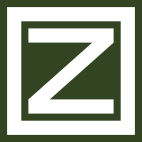



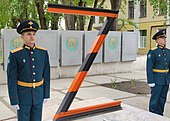
![Residents of Khabarovsk, including Young Guard of United Russia members, arranged in "Z" formation, as organized by the city administration and the United Russia party[53]](https://upload.wikimedia.org/wikipedia/commons/thumb/8/8a/Z_symbol_flash_mob_at_Platinum_Arena_in_Khabarovsk_%28cropped%29.jpg/231px-Z_symbol_flash_mob_at_Platinum_Arena_in_Khabarovsk_%28cropped%29.jpg)

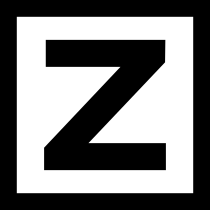

!["Z" in ribbon of Saint George colors with hashtag #СвоихНеБросаем (#SvoikhNeBrosaem; "We don't abandon our own")[26]](https://upload.wikimedia.org/wikipedia/commons/thumb/3/30/Letter_Z_in_the_colours_of_the_Russian_Ribbon_of_Saint_George_withHashtag.svg/238px-Letter_Z_in_the_colours_of_the_Russian_Ribbon_of_Saint_George_withHashtag.svg.png)
![Rusich unit patch[54]](https://upload.wikimedia.org/wikipedia/commons/thumb/e/e5/DSHRG_Rusich_patch_during_2022_Ukraine_war.png/160px-DSHRG_Rusich_patch_during_2022_Ukraine_war.png)






